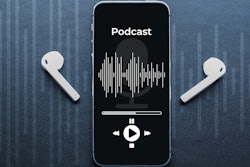
In the ever-evolving landscape of dental care, dental assistants play a crucial role in ensuring the smooth operation of dental practices. Dental assistants equipped with a solid understanding of key Code on Dental Procedures and Nomenclature (CDT) codes are better positioned to support the operational and clinical aspects of dental practice.
As the bridge between dental care and administrative excellence, their role in leveraging dental codes cannot be overstated. Frequently, it is the clinical assistant who brings knowledge of CDT code considerations and changes to the attention of the dentist and administrative team. With continuous learning and application, dental assistants can significantly contribute to the smooth, efficient, and successful delivery of dental services.
The importance of understanding current CDT codes
Understanding CDT codes can significantly impact a practice's efficiency, billing accuracy, and patient satisfaction. For dental assistants, knowledge of these codes aids in various tasks, including scheduling appointments, processing insurance claims, and maintaining patient records.
Over the last five years there have been over 200 changes to the CDT, including 117 new codes and 18 deletions. Failure to be aware of these changes can mean missed opportunities for coding procedures, incorrect reporting that leads to delays and denials, and even the use of codes that no longer exist.
The following aims to shed light on some recent updates to dental codes that every dental assistant should be familiar with, enhancing their contribution to the dental team's success.
Key recent dental code changes for dental assistants
1. Diagnostic codes
D0210 Intraoral -- Comphrehensive series of radiographic images
Revisions to D0210 in 2023 included changing the nomenclature from "complete" to "comprehensive," removing the number of images required and adding language that now requires images that show both interproximal areas and edentulous areas. As such, proper delivery of D0210 must include radiographs of areas where teeth have been removed to look for residual root tips, cysts, and other pathology.
D0396 -- 3D Printing of a 3D dental surface scan
This new code for 2024 allows for the documentation of 3D-printed models. While it is likely not a covered service, the fee may be passed to the patient unless it is disallowed by in-network contracts.
D0801 -- 3D Dental Surface Scan - Direct
This code addition in 2023 documents the capture of an intraoral 3D scan of the dentition and tissues. Many practices are utilizing this code as a supplement to baseline patient records, framing it as a "wellness scan." These scans can then be used for treatment planning (D0393) or compared to future scans (D0394) to evaluate changes such as growth, gingival recession, tooth movement, etc. While this code is not currently being reimbursed regularly, continued use in this manner may encourage future plan coverage.
2. Restorative codes
D2976 -- Band Stabiliation -- per tooth
This new code to the 2024 CDT code set reports the placement of an orthodontic band around a large filling to give circumferential support and prevent fracture until a full coverage restoration may be placed at a later date. Performing band stabilization instead of a stainless steel crown will prevent tripping crown replacement frequency limitations. It is a covered service under most plans on posterior teeth once per lifetime.
D2989 -- Excavation of a tooth resulting in the determination of nonrestorability
Another new code in 2024, D2989 allows for the reporting of time spent removing decay only to find a tooth is unrestorable and must be removed. If extracted by the same provider on the same day, it will likely not be reimbursed. It may be reimbursed, however, if referred to another provider, like an oral surgeon, or perhaps even if temporized and then extracted on a different date of service. This will be plan-dependent.
D2991 -- Application of hydroxyapatite regeneration medicament -- per tooth
Preparation of tooth surfaces and topical application of a scaffold to guide hydroxyapatite regeneration.
D2991 is a code addition that allows for the reporting of materials like Curodont Repair, a peptide medicament that forms an internal scaffolding in areas of incipient decay or demineralization and then attracts calcium and phosphorus from the saliva to form new crystalline tooth enamel, essentially "healing" shallow areas of affected tooth enamel.
3. Periodontal codes
D4266 -- Guided tissue regeneration, natural teeth - resorbable barrier, per site
This procedure does not include flap entry and closure, or, when indicated, wound debridement, osseous contouring, bone replacement grafts, and placement of biologic materials to aid in osseous regeneration. This procedure can be used for periodontal defects around natural teeth.
D4267 -- Guided tissue regeneration, natural teeth - nonresorbable barrier, per site
This procedure does not include flap entry and closure, or, when indicated, wound debridement, osseous contouring, bone replacement grafts, and placement of biologic materials to aid in osseous regeneration. This procedure can be used for periodontal defects around natural teeth.
Alterations to these existing procedure codes in 2023 made them specific for use of membranes (resorbable and nonresorbable) around natural teeth in periodontal surgery. New codes were also added for use of membranes around implants (D6106/D6107) and in edentulous areas, including where teeth were just extracted (D7956/D7957). There was also the addition of code D4286 removal of a nonresorbable barrier.
4. Implant codes
D6089 --Accessing and retorquing loose implant screw - per screw
The addition of D6089 in 2024 allows for the reporting of tightening an implant screw without removal of the prosthesis. If the prosthesis is completely removed, D6080 implant maintenance would be more appropriate.
D6197 -- Replace of restorative material used to close an access opening of a screw-retained implant-supported prostheses, per implant
This new code was added in 2023 to report the replacement of filling material in the screw access hole of an implant supported prosthesis. It is not to be used at initial placement or in addition to D6080, which already accounts for the restoration.
Help code for what was done
As dental assistants, you have the unique ability to know exactly what treatment was rendered during the patient’s visit. How often is the treatment planned, the actual treatment delivered? If the treatment is altered, are the treatment codes updated? Dental assistants can help ensure the CDT codes are updated to match the treatment rendered. Your participation in the treatment and coding process could help prevent your office from missing out on billable services. Click here to share how you are helping your offices update the CDT codes when treatment changes.
How to minimize coding errors in your practice
By leveraging tools like Practice Booster's Code Advisor, dental assistants, and dental teams can further minimize coding errors and maximize reimbursement. This tool provides an extensive database of CDT codes, predictive error correction, and detailed guidelines for accurate code usage. Embracing Code Advisor equips dental practices with the means to streamline operations and ensure financial health. For those looking to elevate their practice's coding accuracy and efficiency, click here to get a 14-day free trial of Code Advisor, a step toward operational excellence and optimized reimbursement.
Note: The team at Practice Booster wants to wish our dental assistant friends a very Happy Dental Assistants Recognition Week. We appreciate you!
Dr. Greg Grobmyer is the chief editor of Charles Blair’s Dental Coding with Confidence and Practice Booster’s Insurance Solutions Newsletter, a contributing editor to Dental Administration with Confidence, and Dental Documentation with Confidence, a course creator for DentalZing.com, chief revenue enhancement program adviser and host of the "Dental Code Advisor Podcast."
The comments and observations expressed herein do not necessarily reflect the opinions of DrBicuspid.com, nor should they be construed as an endorsement or admonishment of any particular idea, vendor, or organization.



















